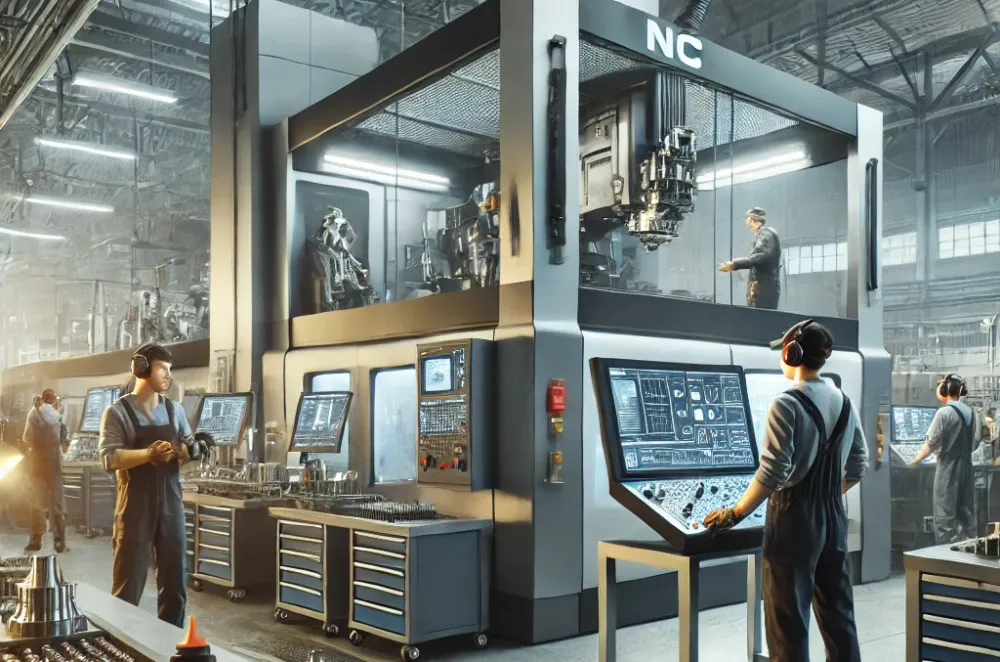How Do You Know When to Buy a New Machine?
Deciding when to invest in a new machine is a critical decision for any manufacturing facility. Monitoring software plays a crucial role in providing the data and insights needed to make informed decisions. Here’s how monitoring software helps determine the optimal time to purchase new machinery:
How Do You Know When to Buy a New Machine?
1. Performance Monitoring and Analysis
Monitoring software continuously tracks the performance of existing machines, providing detailed insights into their operational efficiency and effectiveness.
- Efficiency Metrics: By analyzing key performance indicators (KPIs) such as production output, cycle times, and machine utilization rates, monitoring software helps identify underperforming machines.
- Trend Analysis: Monitoring software can detect trends in machine performance over time, highlighting gradual declines that may indicate a need for replacement.
Example
A manufacturing plant uses monitoring software to track the output of a critical machine. The data shows a steady decline in production efficiency over the past year, suggesting that the machine is nearing the end of its useful life and may need to be replaced to maintain productivity.
2. Maintenance and Downtime Tracking
Monitoring software provides detailed records of maintenance activities and machine downtime, which are essential for assessing the overall health and reliability of machinery.
- Maintenance Frequency: Frequent maintenance may indicate that a machine is wearing out and becoming less reliable.
- Downtime Analysis: High levels of unplanned downtime can significantly impact production schedules and costs, suggesting that a new machine may be more cost-effective.
Example
A factory’s monitoring software reveals that a particular machine has required increasingly frequent repairs and has been responsible for significant unplanned downtime. This pattern indicates that investing in a new, more reliable machine could reduce maintenance costs and improve overall efficiency.
3. Cost-Benefit Analysis
Monitoring software helps perform a comprehensive cost-benefit analysis by comparing the costs of maintaining an old machine with the potential benefits of purchasing a new one.
- Operating Costs: Software tracks energy consumption, maintenance expenses, and operational inefficiencies, providing a clear picture of the total cost of ownership for existing machinery.
- Investment Justification: By projecting the cost savings and productivity gains from a new machine, monitoring software helps justify the investment.
Example
Using data from monitoring software, a manufacturer calculates that the annual maintenance and operating costs of an aging machine exceed the cost of financing a new, more efficient model. The analysis shows that the new machine would pay for itself within two years through reduced operating costs and increased productivity.
4. Predictive Maintenance and Lifespan Estimation
Advanced monitoring software uses predictive analytics to estimate the remaining useful life of machinery, helping manufacturers plan for replacements before critical failures occur.
- Predictive Analytics: By analyzing historical performance and maintenance data, software predicts when a machine is likely to fail or require major repairs.
- Proactive Planning: This foresight allows manufacturers to plan replacements during scheduled maintenance windows, minimizing production disruptions.
Example
A predictive maintenance module in the monitoring software indicates that a key piece of equipment is likely to fail within the next six months based on current wear patterns. This early warning allows the manufacturer to budget for and schedule the purchase of a new machine, avoiding costly emergency repairs and production downtime.
5. Capacity and Scalability Considerations
Monitoring software provides insights into current production capacity and future scalability needs, informing decisions about when to upgrade or add new machinery.
- Capacity Utilization: Software tracks how fully existing machines are utilized and whether current equipment can meet projected demand.
- Scalability Needs: Insights into production trends and market forecasts help determine if additional or upgraded machinery is needed to scale operations.
Example
Monitoring software shows that the current machinery is operating at near full capacity and cannot meet the forecasted increase in demand for the next year. This data supports the decision to invest in new machines to ensure the facility can scale production to meet market needs.
Conclusion
Monitoring software is an invaluable tool for making informed decisions about when to purchase new machinery. By providing detailed insights into machine performance, maintenance requirements, cost implications, predictive maintenance forecasts, and capacity needs, these systems help manufacturers optimize their investments, reduce downtime, and enhance overall efficiency.
Leveraging monitoring software allows manufacturers to make data-driven decisions, ensuring that new machinery investments are timely, cost-effective, and aligned with operational goals.
Interested in digital transformation? Let's discuss!
